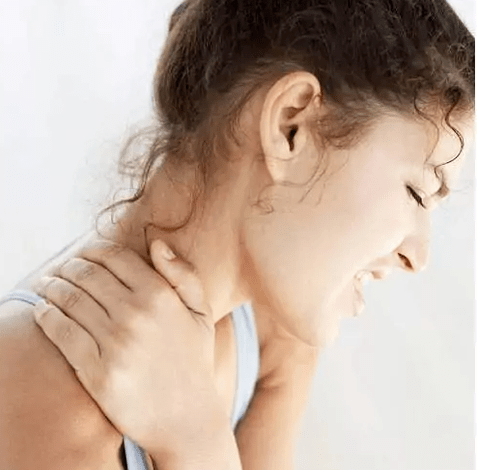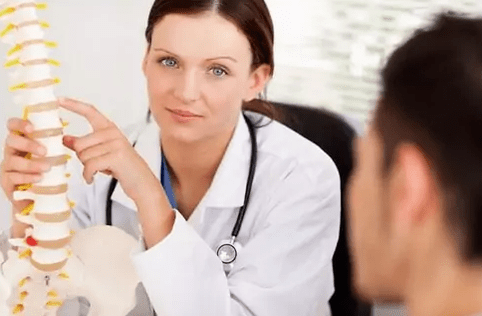Another serious disease of our time is osteochondrosis.The first signs of your youth may occur when you suddenly, sitting on a long, on your computer or above the notebook, suddenly, initially only discomfort, then the pain of the seventh cervix.Soon the pain becomes such that it is difficult to turn his head or "tear" from the pillow.After a few days, the aggravation usually disappears and can go away for a few months, perhaps years before the next attack.However, do not flatter!The first attack is a serious warning that the mechanism of devastating dyspances in the body has already begun.To understand this, we find what osteochondrosis is and why you need to start treating the first symptoms.

What is osteochondrosis?
Osteochondrosis is complex distrophical changes in the spine in which such stages can be distinguished:
- Distrophic changes in the cartilage tissue of the intervertebral discs, as a result of which moves are limited and cause discomfort (Section I)
- Drink deformation and gradual decrease at the intervertebral distance (Section II).
- Formation of intervertebral hernia (Section III)
- The formation of spikes (osteofites) and the ossification of the ligaments, the movement makes it very difficult and painful (Section IV)
The formation of hernia is a complex process to which the entire sections are dedicated.Now, however, you need to know that such a serious illness occurs if osteochondrosis does not treat it in time.Therefore, so that we have a thought about what the hernia is, we will tell you in two words.To do this, you need to re -turn to the anatomy for a short time and remember the spine and spinal tool.
It leads to the weakening of the fibrous ring of the dystrophy of the spine and the displacement of the main shock absorber (core) of the disc, which results in the formation of the bump (protrusion) or the so -called "gryzh".Then, during the load, sooner or later, the ring and magmuch output breaks outside the plate - the hernia itself is directly formed, causing severe pain when the radical nerve is injured.
In order to identify the presence of osteochondrosis, especially in the early stages, when the curvature does not provide obvious external signs, it determines its orientation and degree of magnetic resonance imaging.This diagnostic method does not cause damage to human health, unlike X -try, and allows an accurate determination of the angle of difference.Based on the description of the radiologist and MRI images, the specialist prepares the patient's proper treatment plan, which is of course reinforced with muscle lining.
When selecting the MRI clinic of the study, it is first and foremost to study the strength of the equipment used and the qualification of clinic employees.
Types of osteochondrosis of the spine
Osteochondrosis can be different:
- The cervix is most common as young people and older
- Chest - relatively rare
- Lumbar - develops after 40 years
- Sacral - usually the lumbar shift
- Common - affects many classes or even the whole spine
In the same sequence, the spontaneous development of this disease often occurs: from the upper cervical vertebrae, it ends with sacred and coccygeal.
But the type of osteochondrosis is related to human activity.So the cervix is generally common between students, designers and all other representatives of the "brain" in which the neck is in constant tension for a long time.Physical workforce employees, young people athletes, youth athletes, lumbar osteochondrosis, taxi drivers, shoemakers and other "sitting" specialties are a sacred plus, a lumbar cervix is a complete set!The difficulty of osteochondrosis is also often observed in Vete, who is on his feet almost all day, as the sacrum keeps our body upright and the entire cargo falls during the standing or pedestrian process.
The reasons for the appearance and development of osteochondrosis
However, osteochondrosis is not only a result of a sedentary lifestyle, inadequate posture or weight lifting.There are many more factors and causes of the origin of this disease.Only the main highlights:
- Malnutrition is not sufficient amounts of protein and increased sugar and fats
- Violated metabolism and hormonal imbalance
- Infectious diseases
- Hypothermia
- High weight and obesity
- Spine injuries
- Bone degeneration of age
- Hereditary diseases
- Tension
The main symptoms of osteochondrosis
Cervical osteochondrosis:
- Pain in the neck and head (under the paddle, under the sternum and hand)
- Dizziness, especially if you change the position of the head
- Numbness in the neck, face, tongue, submarine areas
Chest osteochondrosis:
- Chest pain that can enhance during inhalation and movement
- A feeling of numbness of chest
Lumbar intersection:
- Pain in the lower back (may be acute or acute) that gives the legs and the localization of pain in the legs may move through the entire length of the limb
- Legs (loss or even losing sensitivity)

Pain of osteochondrosis is specific neurological.Thus, headaches, dizziness, numbness, or legs are generally involved as a direct manifestation of head or leg diseases, although they may be symptoms of osteochondrosis of the spine.Therefore, if you notice something anxiety in your well -being, it coincides over the signals listed, and be sure to visit a neuropathologist.After examining it, the doctor will necessarily prescribe an X -Gay examination with suspicion of this disease.
The main methods of treating osteochondrosis
Most effective removal of back pain:
- Therapeutic gymnastics (back pain exercises)
- Mls laser (after session 2 the pain passes through)
- HIVAMAT (a unique procedure that instantly relieves pain but should be just like 2-3 times.)
The main method of treatment and prevention is the elimination of the causes of osteochondrosis.
Prevention and no -Drog Treatment
This is above all:
- Active (mobile) lifestyle and sport
- Normal nutrition with protein, except for fats and sugar
- Medical Physical Education (Exercise Therapy) with an individual selected practice for each type of osteochondrosis
- Physiotherapy (magnetic treatment, ultrasound treatment, electrophoresis, laser therapy)
- Massage, manual and reflexology
However, such a conservative treatment method is suitable for prevention to prevent the progress of osteochondrosis and not during the active period of the disease.But how to treat this disease, when started, its manifestations are obvious, and man has a stage of aggravation, namely: exactly:
- pain and raised temperature
- Limited with great difficulties and movements
In this case, body practice and physiotherapy are categorically contraindicated and only medication is used.
Medication methods
Above all, you should stop the pain and relieve the inflammatory process in the nervous spine, which is irritated.They are appointed for this purpose:
- non -steroid anti -inflammatory drugs (NSAID);Corticosteroids, glucocorticoids idr.(They are written if the NSAIDs are not enough)
- Novocaine blockade (with severe pain)
- preparations for the removal of muscle cramps;
- painkillers, gels and creams;
The second phase of treatment includes:
- Use of vasodilators: osteochondrosis is always adjacent to reducing blood vessels and oxygen starvation of the brain (ie headache and dizziness)
- Appointment of reassuring funds for the nervous system: patients with this disease are always alarming and suspicious, and in most cases they are very scared of the first attacks of the disease.
- Treatment of concomitant phenomena - these may be hypertension and violate heart activity
- Treatment should be prescribed as a neuropathologist in the form of drops, injections and tablets
Don't try to treat the disease yourself!
Return to non -drog pre -treatment methods at the end of the acute period and at the end of the well normalization: exercise therapy, massage and physiotherapy in the absence of contraindications.
Health to you!


























